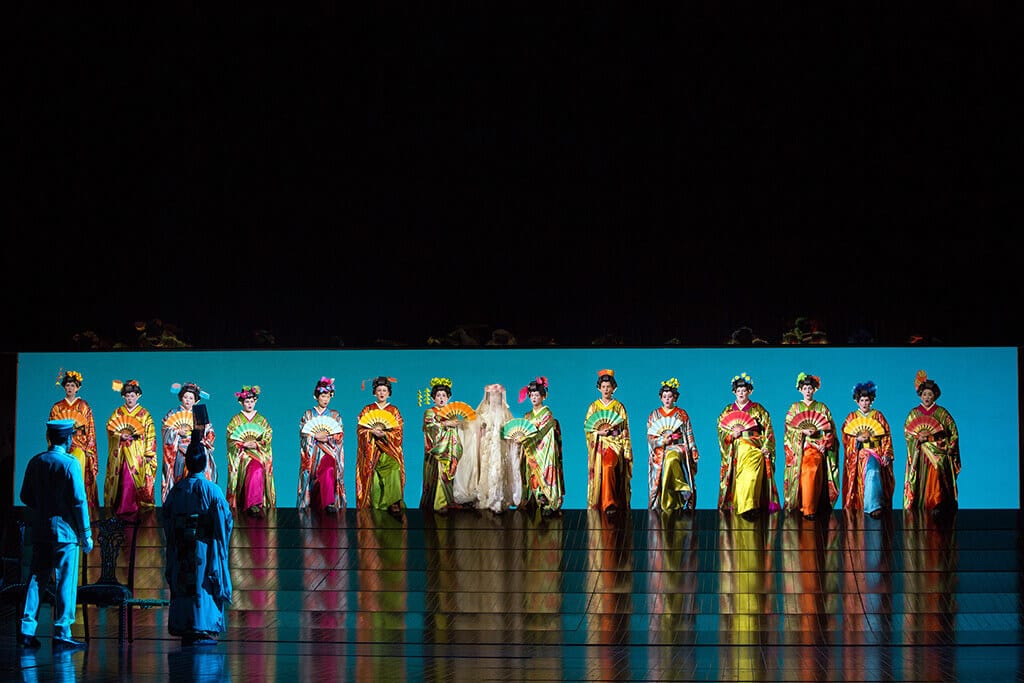

It’s, as some people would call it, a big sing. She has to sing one of opera’s most renowned duets and arias, followed by some truly complex musical passages that test not only her technique, but interpretative and musical insight. The soprano has to interpret a character that transforms from a child into a woman. Modern issues of interpretation aside (and this opera brings forth a great deal, many of which have been contended for decades and some that are now being questioned more acutely now), the role calls for an interpreter to not only sing virtually non-stop from the moment she arrives on stage. Her performance was a reminder that opera’s core repertoire is not always in need of a new staging concept in order to connect with contemporary audiences.While there’s no doubt that Puccini’s operas bring with them a level of difficulty, perhaps none is more complex or challenging than the central role in his “Madama Butterfly.” He also found a game partner in the mezzo-soprano Elizabeth DeShong, whose thrilling portrayal of the maid Suzuki sounded energized by the conductor in the final act. Pier Giorgio Morandi’s conducting was genteel (verging on gentle), save for a few dramatic lurches that pushed faster than one singer (or subset of the chorus) was expecting. In these moments, the intensity that was missing from the flesh-and-blood interactions became plainly obvious. Tellingly, the soprano was at her most moving when interacting with her young son, depicted in this production through Bunraku-style puppetry. Some darkly rich tones provided dramatic dimension for her first-act work before a brighter, brassier sound underlined the character’s hopeful delusions in the second act.
#The metropolitan opera madama butterfly full
Yet during more intimate passages, she pulled the night together by delivering a Cio-Cio-San full of subtle yet fascinating changes. He’s work in ensembles could also give off a stranded feeling - and not just because of the strain evident in ascents to high notes. This made his climactic flight from Hui He’s Butterfly appear more pathetic than dramatic - a potentially interesting interpretation that would have felt more purposeful had the tenor found more chemistry with other singers earlier in the evening. In his Met debut, the tenor Piero Pretti fashioned a lyrical approach to the role of the Navy lieutenant Pinkerton. In the second act, when the baritone Paulo Szot’s Sharpless was ruing the possible consequences of informing Butterfly of her would-be husband’s intentions, he looked like he was managing a minor headache, instead of living through a tragic injustice. Minghella’s chamber designs did not project big-screen impact. (For confirmation, just look to Kenji Mizoguchi’s “ Sisters of the Gion.”) Though on Friday, Mr. Hemming characters into confined spaces doesn’t preclude cinematic power - especially in stories about the economically precarious life of geishas. But during the bulk of the evening the narrative action can feel restricted as fate unfurls in front of movable doors, closer to the audience. Acts conclude with artfully arranged tableaus, underneath a smartly placed mirror.
#The metropolitan opera madama butterfly series
But does that reputation hold up? At Friday night’s performance, which opened this season’s revival, similarities between the forms seemed passing in nature.Īn imposing rectangle suffused with a series of eye-popping colors continues to dominate the scenic background, suggesting a wide-screen aesthetic. Since then, the promotional shorthand for this take on Puccini’s repertory staple has held that it is cinematic - a worthy extension of Mr. And it remains a bookmark for the moment when Peter Gelb’s tenure as general manager of the company began, back in 2006. Anthony Minghella’s Metropolitan Opera production of “Madama Butterfly” survives for a few reasons.


 0 kommentar(er)
0 kommentar(er)
